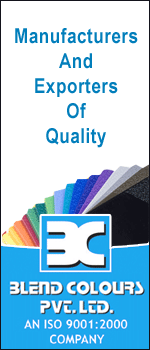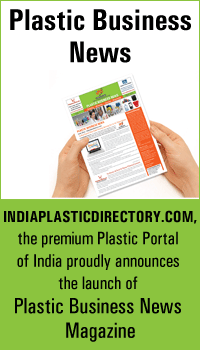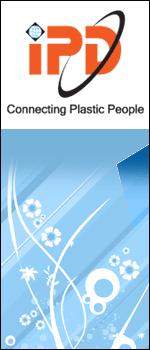|
Recycling
Most thermoplastic polymers can be recycled -
that is converted from their initial use as a consumer, business,
or industrial product, back into a raw material from which some
other product can be manufactured. Recycled materials are often
classified as Post-Industrial and Post-Consumer. Post-Industrial
includes such things as manufacturing scrap, containers and
packaging. Post-Consumer is basically any product, container,
packaging, etc. that has passed through the hands of a consumer,
e.g. plastics bags, beverage containers, carpeting, home
appliances, toys, etc.
Thermoset polymers can only be recycled for use as an inert
filler (something to take up space) in another material.
The keys to effective recycling are:
an efficient infrastructure for collecting used materials
ease of separation and low levels of contamination
an established market for reprocessing/reusing the materials
There are many arguments whether there is not enough of a market
for recycled materials to create the proper recycling
infrastructure, or not a consistent supply of recycled material
to encourage the growth of a market. In the case of the US paper
industry, decreasing availability of virgin wood pulp rapidly
created a profitable market for recycled paper.
The contamination issue is very important for plastics. While
oil, grease, paper labels, glue, etc. will burn off when glass or
metals are recycled, they become contaminants and degrade
thermoplastics during reprocessing.
There are threee versions of the recycling logo. The original one
was three arrows chasing each other in the shape of a triangle,
the second was just a triangle, and the current one is a pair of
angle brackets.
The number inside the triangle or brackets indicates the material
used in the part.
There are six specific categories, and a generic seventh for
"other". In the case of "other" it is good form to put the
material name under the recycling logo.
SYMBOL MATERIAL
1 PET (polyethylene terphthalate)
- beverage containers (2-liter soda bottles), boil-in
food pouches, processed meat packages, etc.
2 HDPE (high density polyethylene)
- milk bottles, detergent bottles, oil bottles, toys,
plastic bags
3 PVC (polyvinyl chloride)
- food wrap, vegetable oil bottles, blister packaging
4 LDPE (low density polyethylene)
- shrink-wrap, plastic bags, garment bags
5 PP (polypropylene)
- margarine and yogurt containers, grocery bags,
caps for containers, carpet fiber, food wrap,
6 PS (polystyrene)
- plastic utensils, clothes hangars, foam cups and plates
7 Other (all other polymers and polymer blends) including
polycarbonate, ABS, PPO/PPE
Bureau of International Recycling
Eco-Wise
PLASTICS RESOURCE HOME PAGE
EnviroLink Home Page
GreenDisk Home Page
Learning for a Better World: What Happens to Recycled Plastics?
California EPA Home Page
Directory of Environmental Resources on the Internet
Sierra Club Home Page
Business and the Environment
Global Recycling Network
Recycler's World
US Recyclable Commodity Prices
Recycling
Tip
"Mixing in" other kinds of plastic to recycle is the worst thing
you can do. It means a lot of extra work for some poor employee
at the recycling center, or else everything you bring is thrown
out as garbage.
If the recycling center could take other types of plastic, they
would tell the public about it. The reason that most recycling
centers only take one or two types of plastic is that there are
very few facilities to recycle the other resins. Recycling
centers have very little control over what is or is not
recyclable, and you won't help them out by trying to make them to
take a certain item for which no market exists.
If you want to do a good deed for your local recycling center,
try giving them clean containers that are sorted by plastic type.
They will appreciate it!
Even the most advanced recycling techniques fail to recycle every
element of the rubbish we generate. Often recyclers are left with
an unpleasant pile of dark rank smelling scrap yard shredder
waste or "fluff" that refuses to transform into anything
intrinsically useful. But now researchers at the Warwick
Manufacturing Group at the University of Warwick have found a way
of using this unpleasant residue to form the basic structure of
everyday plastic containers and components.
Dr Gordon Smith and his team have been using a process called in
mould coating to simultaneously mould and "paint" plastic
components in one simple quick unified process. Normally they
would use an ordinary fresh plastic raw materials for the inside
structure of plastic components created by this process but they
hit upon the idea that they could also take this waste fluff and
seal it inside the coated components, as part of the inner
structure, as they were made. The final products can be painted
to almost any colour and used in everything from car components
to washing up liquid bottles.
For further details contact:
Dr Gordon Smith, Advanced Technology Centre
Warwick Manufacturing Group, University of Warwick Coventry CV4
7AL Tel: 01203 523784 email: [email protected]
There are several factors in why a particular plastic is chosen.
Does the bottle need to be stiff? Transparent? Squeezable?
Inexpensive? Recylclable?
A good way to find out more is to get acquainted with the actual
'recylability' of various plastics. Even though it may have a
recycling symbol on the container, many local recycling plants
will not accept certain types. The number inside the little
triangular recycle logo stamped on the bottle will let you know
which type of plastic it is, and the plant will let you know
which kinds they can use. Sometimes the only recycling option
availble to you is to refill the bottle.
Plastics Recycling at University of Vermont:
The Do's and Don'ts
By far, plastics are the most confusing material in any recycling
program. At UVM, and in most collection programs nationwide, only
plastic jugs and bottles with a #1 and #2 code are acceptable.
These #1 & #2 plastic bottles are collected in the "Containers"
recycling category, which also includes glass bottles, aluminum,
and steel cans. UVM collects an average of 7 tons per month of
mixed containers, though only a small fraction (by weight) are
plastics.
In the University program, only "narrow-neck"
plastic jugs or bottles marked HDPE #2 and PET #1 (e.g., water,
milk and detergent bottles) are acceptable. These are "blow
molded," meaning the shape is made by blowing air into a mold,
similar to blowing air into a balloon. The containers are
characterized by a narrow-neck, balloon shaped body, screw top
and a seam along the bottom. We cannot accept any tub-shaped
plastics such as margarine and yogurt tubs despite their code.
These are "injection molded," meaning that the plastic is stamped
into a mold. The two processes have different melt temperatures,
thus the process is disrupted if the two are mixed together. The
biggest contaminants found in UVM's recycling are: plastic cups,
straws and utensils; yogurt cups; deli-style containers; plastic
caps or lids; and durable plastics. Please DO NOT put these items
in the recycle bins.
The plastic bottles collected from UVM are shipped to
manufacturers to be granulated, flaked and pelletized to make
other products. Typically, the #1 plastic bottles get recycled
into polyester fibers for carpet, fleece material, and parka
filling. The #2 plastic bottles are turned into durable plastic
products such as lumber and the inner linings of new plastic
bottles. End markets for other plastics are weak or nonexistent,
so other types of plastics are not handled by the recycling
facility in Chittenden County, where UVM's materials end up.
For more information about recycling at UVM, please visit http://www.uvm.edu/~uvmppd/solidwaste/
or email questions to [email protected].
New self-strengthening plastic could allow the
cars of the future to be built using recyclable polypropylene
plastic. The process developed at the University of Leeds will
make the family saloon lighter, cheaper to produce, easy to
recycle and with rust free bodywork. Trials using the new plastic
for body panels are currently underway with Ford Puma rally cars.
The strengthening process, known as hot compaction, uses threads
of polypropylene that have been stretched out in order to make
the long polymer molecules line up in the same direction. This
regimented structure gives the hot compacted plastic a strength
similar to that of composite materials used in automotive and
aerospace applications. The threads of stretched polypropylene
are then woven to form a plastic cloth that can be carefully
heated and squeezed together to form a rigid sheet. This sheet is
then shaped into car body panels.
Plastic is usually reinforced and strengthened using fibres of
glass or other materials such as carbon to make composite
materials. These make the plastic difficult to form into shape
using the process known as thermoforming. The hot compaction
process is the first process that allows the finished material to
be easily thermoformed into products such as car body parts. Hot
compacted plastic is also under trials for loudspeaker cones,
automotive parts and radomes for the noses of aircraft.
The American Earth Friendly Corporation offers a full line of
recycled plastic lumber and outdoor furniture products like
picnic tables & park benches. Their products carry a 25 year
warranty and are completely waterproof, will never dry-rot, and
never need any painting or sealing. Call them about their
extensive line at:
Corporate Offices & Showroom located at 542 South Federal Hwy. in
Delray Beach, Fl. 33483 / Ph: (561) 276-4152 / Fax: (561)
276-3965
Plastic (and for that matter cardboard composite) pallets have
begun inroads on wood pallets. Recycled HDPE and mixed plastics
are the chief recycled resins. NUCON Corp of Deerfield, IL is
manufacturing from 50% recycled HDPE a repairable plastic pallet.
Atlon Labs of Natick, MA is making a mixed plastics pallet.
Wood pallets are still dominant in the market and will be for a
while. The intelligence on plastic substitutes is that weight is
a factor, repairability is a large factor, and recyclability is a
factor.
There are about 20 firms manufacturing plastic pallets from HDPE
or mixed plastics.
If you don't have storm windows, you can tape sheets of plastic
on the insides of your windows to keep heat in your house. For
under US$5 you can buy a 25 foot x 10 foot roll of 3 to 4 mil
plastic for this purpose. Cover the entire window opening. This
creates a "dead space" between the window and the plastic that
acts as an insulator. The plastic is available at hardware and
garden stores. Unless you want a dark room, buy the clear
plastic, not the black plastic;-)
> I was wondering if any of you have come across imaginative ways
> Japanese businesses have come up with to reduce/recycle or
re-use.
I haven't come across any imaginative ways in Tokyo to reduce,
however, I was surprised once to walk into a supermarket in
Shinjuku/Okubo area where they charged you 5 yen per plastic bag
you take, or you could bring your own bag... Since I was visiting
a friend, I just wanted to buy some sodas to bring over, so I
felt overly embarassed being the only person who needed bags...
Everyone else brought their own bags and gave me this wierd
look... I see that other than pop culture, more ideas from back
home are entering Japan... though slowly... :D
8
Plastic Packaging Recycling Codes and
Typical Plastic Properties
8
Recycling Plastic
|


 Plastics Engineering
Plastics Engineering


 Knowledge Base
Knowledge Base

















 Knowledge Base
Knowledge Base


